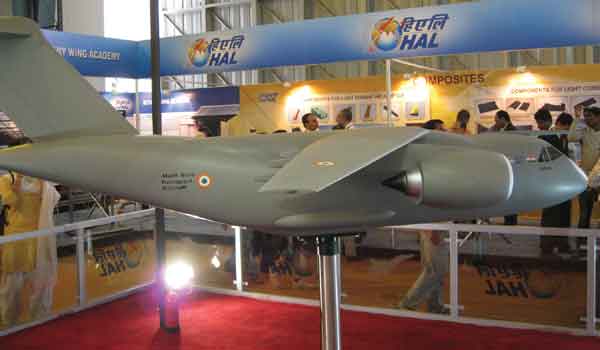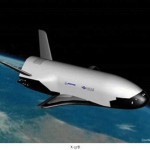Tactical Transporters
The IAF inducted around 110 twin-turboprop An-32s between 1984 and 1991 and the aircraft is still the backbone of the transport fleet. However, since the remaining 104 planes are reaching the end of their operational life, a $400-million agreement to upgrade them to An-32RE standard was signed in 2009. Apart from increasing their life to 40 years, the project includes advanced avionics, cockpit modification and noise and vibration reduction plus enhancement of payload capacity from 6.7 to 7.5 tonnes. While the first 35 aircraft out of 40 were upgraded in Ukraine, the last five are stranded due to the conflict in that country. They are already a year overdue and there’s no knowing when the situation might be resolved. While this is a matter of some unease, of far greater concern is the resultant setback in the upgrade of the balance 64 aircraft. This was to be undertaken at the IAF’s No 1 Base Repair Depot at Kanpur by 2017-2018 but lack of adequate technical support from Ukraine and shortage of spares puts a question mark on the project. Unless upgraded, these An-32s cannot be preserved and kept flying much longer, which would create a major gap in the IAF’s tactical transport fleet.
The Indo-Russian MTA has been under consideration since 2007…
On the other hand, the long-pending proposal to replace the 5.1-tonne payload capacity HS 748M twin-turboprop by a modern tactical transport aircraft is finally seeing clear skies. From the early 1960s onwards, these aircraft were licence-produced in India by state-owned Hindustan Aeronautics Limited (HAL), with the last aircraft being manufactured in 1988. About 56 planes remain in IAF service, employed primarily for troop transport, communication, load-lift tasks and training. Their replacement was delayed more than once, but was finally cleared by the Defence Acquisition Council (DAC) on May 13. The DAC approved the joint bid of Tata Advanced Systems (TASL) and Airbus Defence & Space to supply 56 C295 aircraft to replace the Avro fleet. The programme requires that the first 16 aircraft be bought off-the-shelf while the remaining 40 must be produced in India with indigenous content increasing from 30 per cent to 60 per cent. An obligation to provide lifetime product support and maintenance is part of the proposed deal. However, the contract is yet to be inked.
The Airbus Defence & Space C295 is a twin-turboprop tactical transport aircraft manufactured in Spain. It is a rear-ramp plane that can carry 71 troops or a payload of 9,250 kg. It has a maximum take-off weight of 23,200 kg, cruise speed of 480 km/h, and range of 1,300 km with full payload. The IAF is slated to receive the improved C295W version with winglets and more powerful engines. Significantly, this is the first time that HAL will not be involved in the production of a military aircraft for the nation.
If the MTA project experiences further prolonged delays, or fails to fructify, and the remaining An-32s cannot be upgraded, a serious gap in the IAF’s tactical transport capability is likely to emerge…
Apart from a handful of VIP transport planes, the only other aircraft currently in the IAF’s transport fleet is the Dornier Do-228. About 40 of these twin-turboprop light utility aircraft remain in service and HAL has been awarded a further contract to supply 14 Do-228s to the IAF. The Dorniers are useful for training and communication duties and should remain in service beyond 2030.
Balancing Act
Where does that leave the IAF’s air transport fleet? A key characteristic of air power is flexibility. The transport fleet should be able to offer a wide range of options – strategic as well as tactical, during all-out war as well as in peacetime. Being the natural first choice for Out-Of-area Contingency (OOAC) operations, especially when speed is of the essence, the fleet needs to be well-equipped with long-range strategic airlift aircraft.
However, a pure strategic fleet cannot deliver in many situations that require tactical missions. While regional reach is important, so too is the ability to efficiently execute the routine and unglamorous day-to-day transport tasks that are intrinsic to any air force, and that account for the bulk of its flying effort. While the total airlift capability of the IAF needs to be high, as must be the total strength of aircraft, the medium and light tactical transport segment cannot be neglected. Otherwise large and costly aircraft will inevitably be deployed to ferry smaller loads more suited to tactical transporters. All this makes it imperative to balance the IAF’s transport fleet.
For starters, although the IAF now seems adequately equipped on the strategic front, the same comfortable situation may not obtain once the remaining IL-76MD aircraft are withdrawn from service. Further, the IL-76MD was acquired at a time when the IAF was a mainly defensive tactical force, whereas now the service is on the path of strategic transformation and regional reach. This requires enhanced capability in all respects.
…in the total transport fleet of over 220 aircraft, these are just 15 high-end planes.
The IAF is extremely pleased with the performance of its ten C-17s and has expressed its desire to induct more. However, time is fast running out for a government decision because Boeing’s C-17 production line has already closed and only five aircraft remain unsold or uncommitted – perhaps not for long. It would be ideal to purchase the last five C-17s without delay. Fifteen C-17s and 11 C-130J aircraft would give the IAF sufficient heavy-lift capability at least till mid-century.
The euphoria over the induction of the C-17 and the C-130J also cannot hide the fact that the state of the tactical echelons of the fleet is unsatisfactory. After all, in the total transport fleet of over 220 aircraft, these are just 15 high-end planes. Adding six more C-130Js that are being acquired and the still flyable eight or ten IL-76MDs makes barely 30 aircraft. That still leaves a huge number of ageing medium and light tactical aircraft to preserve or upgrade and finally to replace. The situation would be somewhat brighter with the arrival of the new C295s.
Even if all the An-32s are successfully upgraded (and that prospect is currently in some doubt) they will only last till about 2030 after which they must be retired. The plan is to replace them with a new twinjet – the Multirole Transport Aircraft (MTA). The Indo-Russian MTA has been under consideration since 2007. In September 2010, HAL signed a joint venture agreement with United Aircraft Corporation (UAC) of Russia to develop this new high wing, rear loading, tactical transport aircraft, a derivative of the Iluyshin IL-214. With its 15 to 20-tonne payload, the MTA would be capable of mainly tactical roles and limited strategic ones. The IAF intends to order 45 MTA initially and since the payload capacity will be more than twice that of the An-32s and a diminishing number of An-32s would still be in service, this number should suffice for the next few years. Once the An-32s are retired, some more MTA are likely to be ordered.
The MTA proposal does not appear to be proceeding smoothly…
However, the MTA proposal does not appear to be proceeding smoothly. It is mired in haggling over HAL’s work share, engine power, and other aspects. Unconfirmed reports indicate that agreement has at last been reached to power the MTA with two Russian Aviadvigatel PS-90 high-bypass commercial turbofan engines. If HAL can also quickly reach an agreement with the IAF on the commencement of the crucial 24-month detailed design phase, the aircraft’s first flight can take place in about four years from the start of this phase.
No country can be a true aerospace power without a defence aerospace industry and no country can have a powerful aerospace industry without involving the private sector. The Airbus-Tata C295 programme, therefore, must be seen as a vital first step towards the meaningful participation of the private sector in the country’s aerospace sector – a move that might ultimately create an Embraer of India. It will also provide the long overdue and the much-needed competition to the state-owned Hindustan Aeronautics Limited.
If the MTA project experiences further prolonged delays, or fails to fructify, and the remaining An-32s cannot be upgraded, a serious gap in the IAF’s tactical transport capability is likely to emerge over the next five to ten years. Therefore, clear timelines need to be laid down for various phases and if they are not met the MTA must be reconsidered. Within a few years, substantial numbers of new Airbus C295 aircraft should be in IAF service with the contracted balance under production. And the Airbus-Tata combine would be only too glad to receive a follow-up order.






that’s a detailed post on air transports. Really informative…
We can only say we have the strategic capability when we are capable of Para dropping 2 Airborne Battalion groups within a span of 24 hours anywhere in Asia, and across the middle east, with the rest of the Airborne Brigade being built up in the 2nd 24 hours. For that I am sure you understand the kind of equipment and that is required. There will also be a need to provide prophylactic cover to the Airborne stream to and fro as well as a command and control setup at both ends. Are we prepared and practiced for that. Actually we are from from that. That’s the kind of capability we need to build up, HADR is just in incidental issue and not a front runner task for the Air Force. The focus should be on Strategic and Tactical operations and we are not well prepared for that as of now.